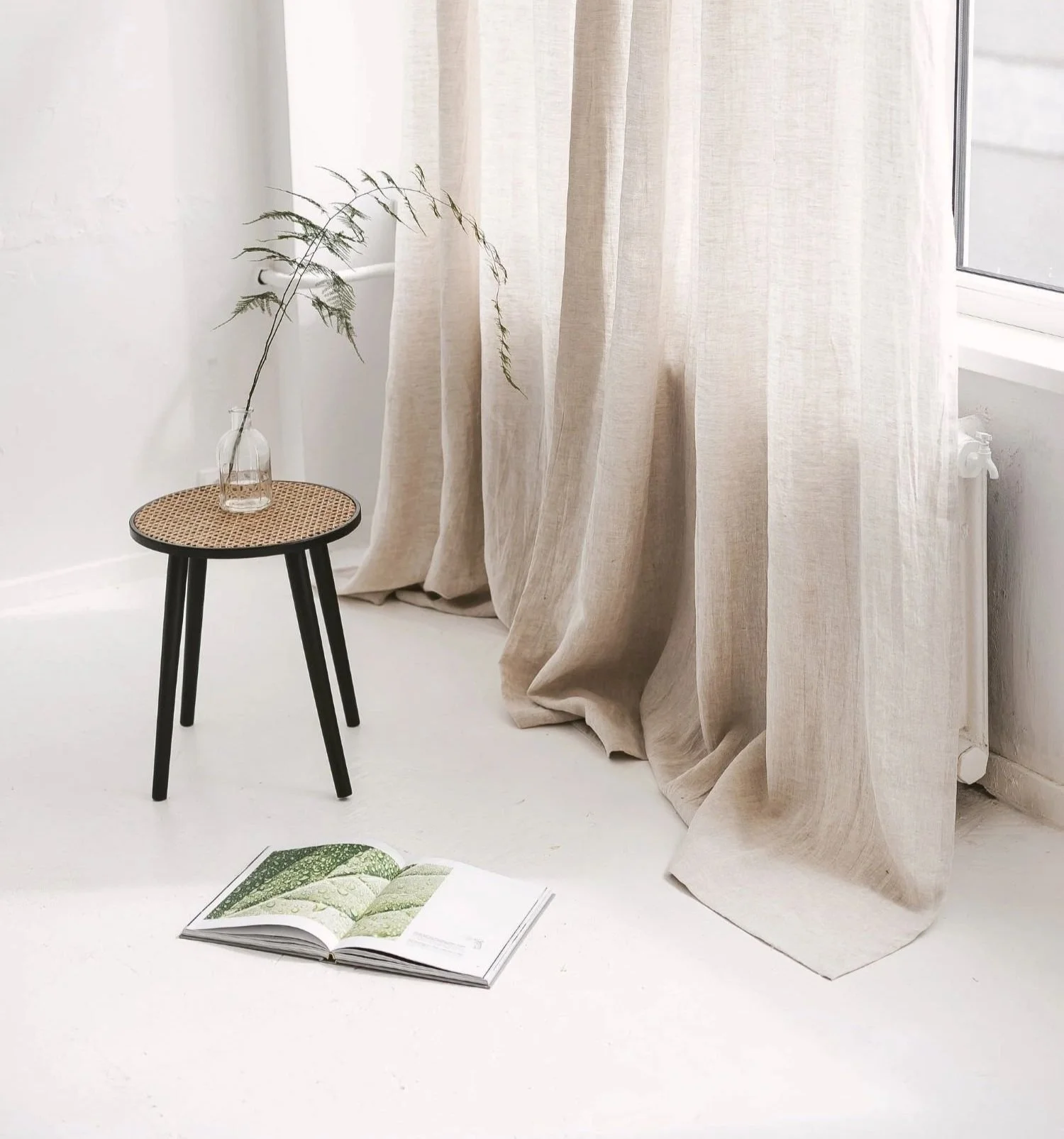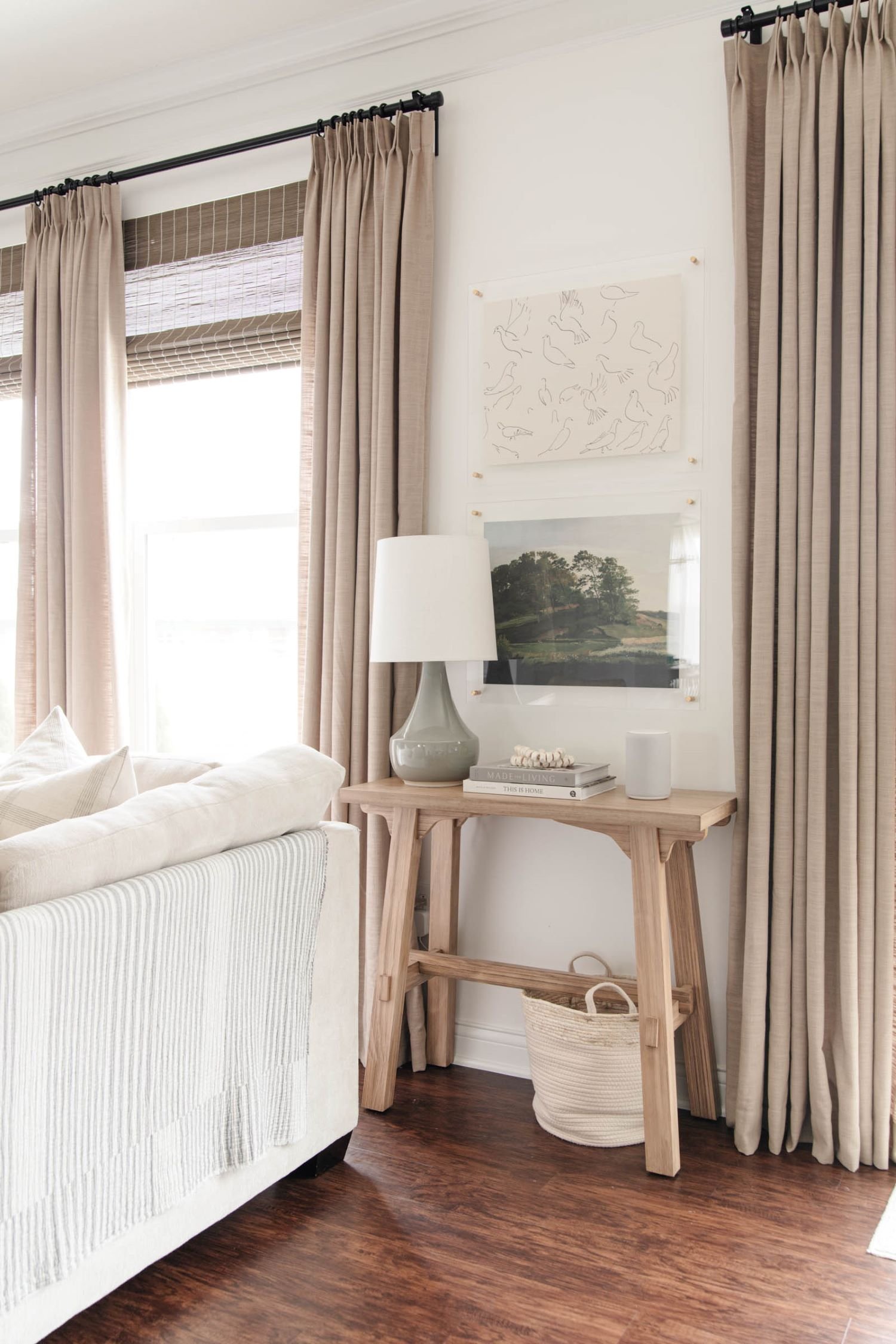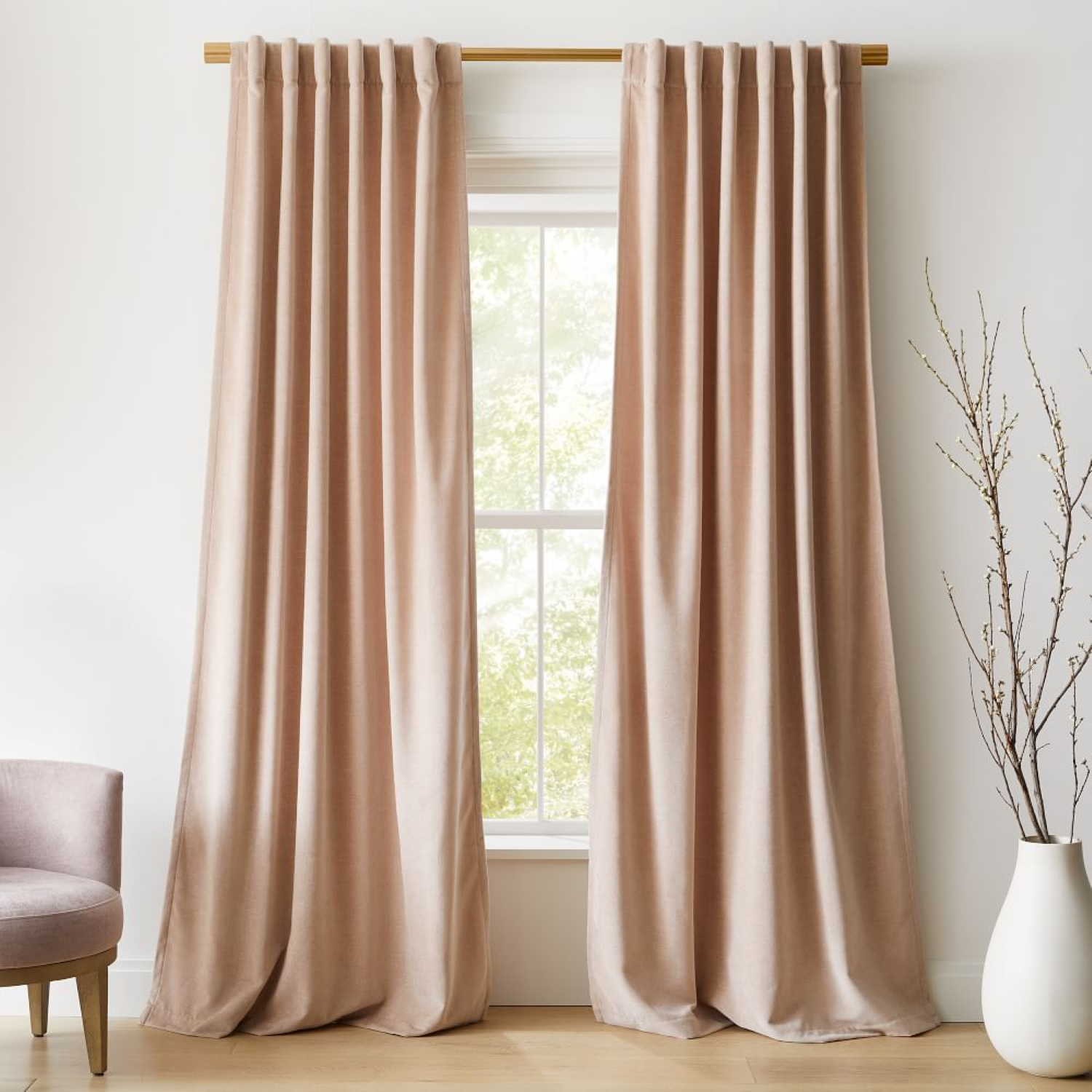Drapery Series: Fabrics
We love drapery here at First Impression Designs! It’s the icing on the cake that finishes a room and ties it all together with softness and warmth. Drapery has the power to elevate a room, create an illusion of higher ceilings, and filters what light comes into your home. When tackling the idea of adding drapes you may come to notice there are a lot of different choices you can make, and it can become overwhelming. To help you out, follow along with our drapery series – first thing first, let’s get some fabric.
We want to consider the composition and the design and pattern of your fabric. You want the drapery to suit and compliment your home and to be timeless in its design.
Linen and Linen Blends
Linen and linen blends are best for holding a pleat, hanging nicely and long lasting durability. A pure linen fabric drape has all the beauty and organic qualities of linen, it’s airy, causal appearance makes it irresistible to so many people. Keep in mind that linen has the tendency to wrinkle, where as a linen blends have more structural integrity from it’s additional elements in it’s composition. Those additions can also make the fabric softer to the touch than anything pure. For it’s care, we recommend dry cleaning or hiring a professional cleaner to come in.
Cottons
Another great natural fabric choice is cotton. Cotton is easy to clean and holds it’s shape for a more clean look compared to a flowy linen. Being a natural material, cotton does attract mildew and fades quicker than a lot of other fabrics. Often clients will opt for a cotton blend that provides moisture control, which lengthens the lifespan of the drapery panels.
polyester
Polyester and poly blends are cost effective choices and are loved by a lot of clients because they are fade resistant, highly durable and low maintenance. With a polyester fabric there are a couple cons: it’s highly flammable and not recommend near fireplaces or in kitchens, as wells as, it’s tendency to absorb odors and not allowing for a lot of airflow.
Silk
Silk fabrics can look amazing in appearance and application, giving a rich and luxurious feeling. However, silk does stain easily and can break down over time from sunlight. The composition of silk is strong yet needs to be cared for delicately.
velvet
We love the look and feel of velvet, it looks rich and glamorous as well as holds its shape very well. It’s a durable fabric but with it’s weight special considerations must be taken when choosing a rod size and the style of application. Velvets should also not be washed but rather brushed for maintenance.
To Line or Not To Line Your Drapes, That Is The Question
Yes, it is a question we get asked by many of our clients, no matter their fabric of style choice. We usually recommend lining the drapery whenever possible as it protects the fabric from sun rot and adds more structural integrity to the panels. This choice is really up to client preference; you can order regular lining or black out lining depending on your needs. We have installed unlined sheers for some of our clients as they are light in texture and feel and are usually meant for blocking out light but not necessarily offering true privacy. Black out lining is super important for bedrooms and areas that need more privacy as they truly block out a lot of the natural light.
When it comes to selecting fabric there are a couple factors to keep in mind. Are the drapes for show or needed to block light in a nursery? Where are the drapes located, is there a high likely hood of staining or odour absorption? What overall look are you going for, rich and luxurious or light and flowing? The most important of them all, what is your budget? Hopefully you’ve learned a few things on fabrics for using in day to day life as well as drapery. If you feel overwhelmed still we can always help and love doing custom drapery, so really it’s a win win situation.
Okay, so you’ve picked your fabric, now what. Next blog in our series will take you through the overall styles of drapery panels.
Happy Thursday!







